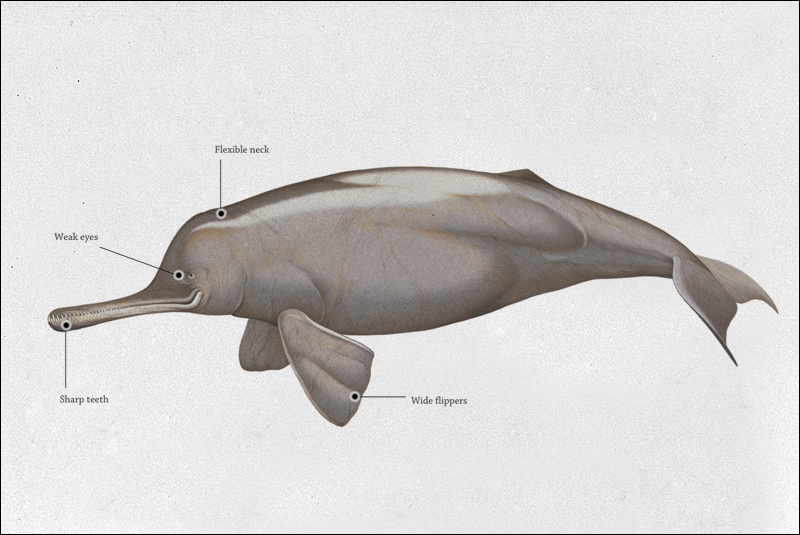India’s national aquatic animal is on the verge of extinction. The Gangetic Dolphin or the ‘Susu’ – so called for the sound it produces – is listed as an “endangered species” in the International Union for Conservation of Nature (IUCN) Red List.
Found in the Ganges-Brahmaputra-Meghna and Karnaphuli-Sangu river system of India, Nepal, and Bangladesh, the Gangetic river dolphin evolved almost 23-25 million years ago; it’s now identified as a unique sub-species – Platanista gangetica – of the South Asian river dolphin.
One of the earliest descriptions of this species comes from William Roxburgh, an eminent botanist who worked in the Godavari River delta in the 1780s. In his book, “An account of a new species of Delphinus” (1801), Roxburgh describes it as “a very strange-looking dolphin.” Giving a detailed description of its anatomy, he writes:
the body is robust and soft, with a flexible neck, often characterized by a constriction or crease…the long beak is distinct from the steep forehead, but there is no crease between them. The beak is like a pair of forceps, is laterally compressed, and widens at the tip; it is proportionately longer in females than in males. The blowhole, unlike that of most cetaceans, is a slit that runs along the long axis of the animal’s body. There is a shallow ridge on the melon, in front of the blowhole. The eyes are extremely small and are located above the distinctly upturned corners of the mouth.
Copyright©Madras Courier, All Rights Reserved. You may share using our article tools. Please don't cut articles from madrascourier.com and redistribute by email, post to the web, mobile phone or social media.Please send in your feed back and comments to [email protected]











